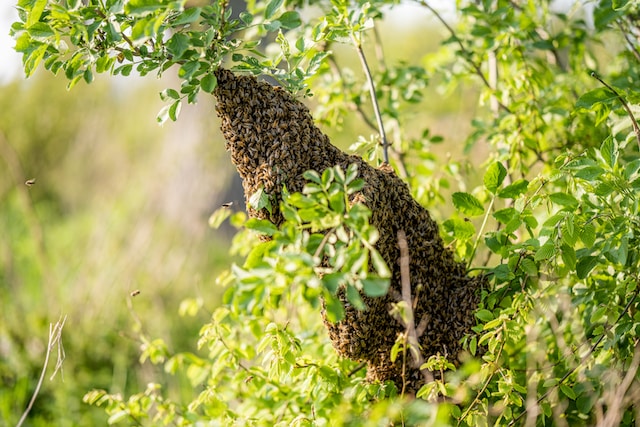This is a guest post by David Ford.
Getting into feral bee tending can be an incredibly rewarding experience for those interested in beekeeping. However, it can also be a challenging and potentially dangerous undertaking if you’re not prepared. In this article, we’ll discuss some of the key things to consider before getting started with feral bee tending.
First and foremost, it’s important to understand what feral bee tending entails. Unlike traditional beekeeping, which typically involves keeping bees in managed hives, feral bee tending involves working with wild bees that have established themselves in natural habitats. This can include everything from hollow trees and rock crevices to abandoned buildings and other structures. This is about conservation, not about honey to give to the relatives at the holidays (though that’s fun too).
One of the biggest challenges of feral bee tending is locating and accessing these wild bee colonies. This often involves scouting out potential nesting locations and carefully observing the behavior of local bees to determine their likely habitats. Once you’ve identified a colony, you’ll need to carefully plan your approach to avoid disrupting the bees or damaging their nest.
Another important consideration when getting into feral bee tending is safety. Unlike managed bee hives, wild bee colonies can be much more aggressive and unpredictable. This means that you’ll need to take extra precautions to protect yourself from bee stings and other risks. This may include wearing protective clothing, using smoke to calm the bees, and having a plan in case of emergency.
Once you’ve located a feral bee colony and taken the necessary safety precautions, it’s time to start tending to the bees. This can involve everything from monitoring the health of the colony and providing food and water to performing routine maintenance tasks like cleaning the hive and removing pests and parasites.
Of course, feral bee tending also requires a certain level of knowledge and skill when it comes to working with bees. This may include understanding the different types of bees and their behavior, as well as knowing how to identify and treat common diseases and pests. There are over twenty thousand species of bees around the world and four to five thousand here in the United States. In Iowa there are approximately five to six hundred and I work with about a hundred different species of feral bee. Of those twenty thousand worldwide only seven species of bees are known as honey bees.
Overall, getting into feral bee tending can be a challenging but incredibly rewarding experience for those with a passion for beekeeping. Whether you’re just starting out or you’re an experienced beekeeper looking to take your skills to the next level, there are plenty of resources and support available to help you succeed. So why not give it a try and see where your love of bees can take you?



